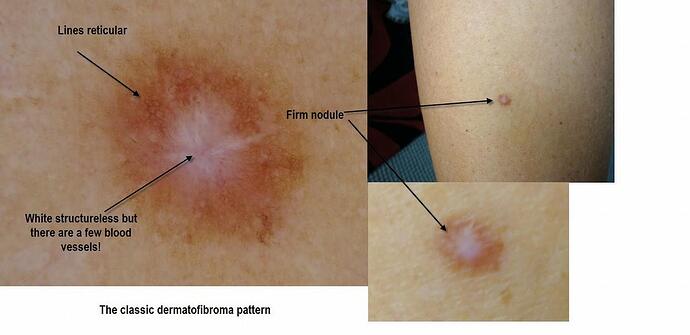DERMATOFIBROMA
Dermatofibromas, or histiocytomas, are common noncancerous (benign) skin growths. They are firm to hard, and they are skin-colored or slightly pigmented. Dermatofibromas can be tender.
These lesions usually persist for life, and they may heal as depressed scars after several years. Occasionally, dermatofibromas found in large numbers in grouped or linear clusters are seen in association with immune disturbances, such as leukemia, HIV, and lupus.
Who’s At Risk
Dermatofibromas may occur at any age but are seen more commonly in adults, particularly females.
Signs and Symptoms
Dermatofibromas are most often found on the arms and legs of women. They are small brown or reddish-brown mobile nodules, and they feel quite firm. They may be tender to touch. Many lesions demonstrate a “dimple sign,” where the central portion puckers as the lesion is compressed on the sides. They generally do not change in size.
Medical Care for Dermatofibromas
Dermatofibromas are noncancerous lesions, but seek medical evaluation if a lesion begins to increase in size, becomes painful, or if large numbers of dermatofibromas in grouped or linear clusters are seen.
Treatments Your Physician May Prescribe
The lesion is noncancerous; therefore, reassurance is often all that is needed.
Symptomatic, protruding dermatofibromas can often be reduced in size by liquid nitrogen (freezing) therapy or steroid injections to the lesion. In patients with dark skin, freezing with liquid nitrogen and steroid injection of may cause pigmentary change that is usually temporary.
Surgical excision can be performed, but due to the high incidence of recurrence, the use of topical steroids or steroid injections into the lesion post-excision is often necessary.
(If You Are Suffering With Any Skin Problem . We’ll Solve It In-Shaa-Allah ![]() Information/ Appointment Call On this Number 00923215667849)
Information/ Appointment Call On this Number 00923215667849)
